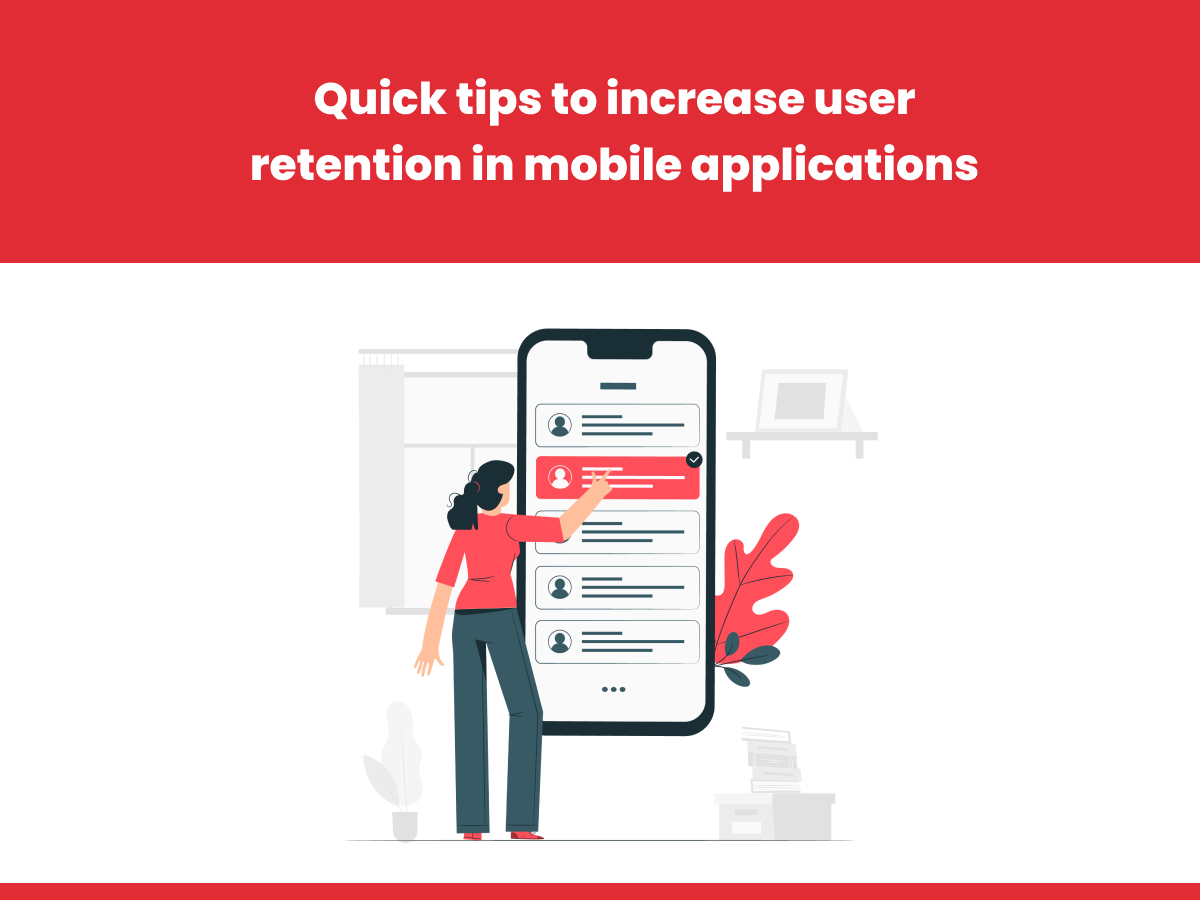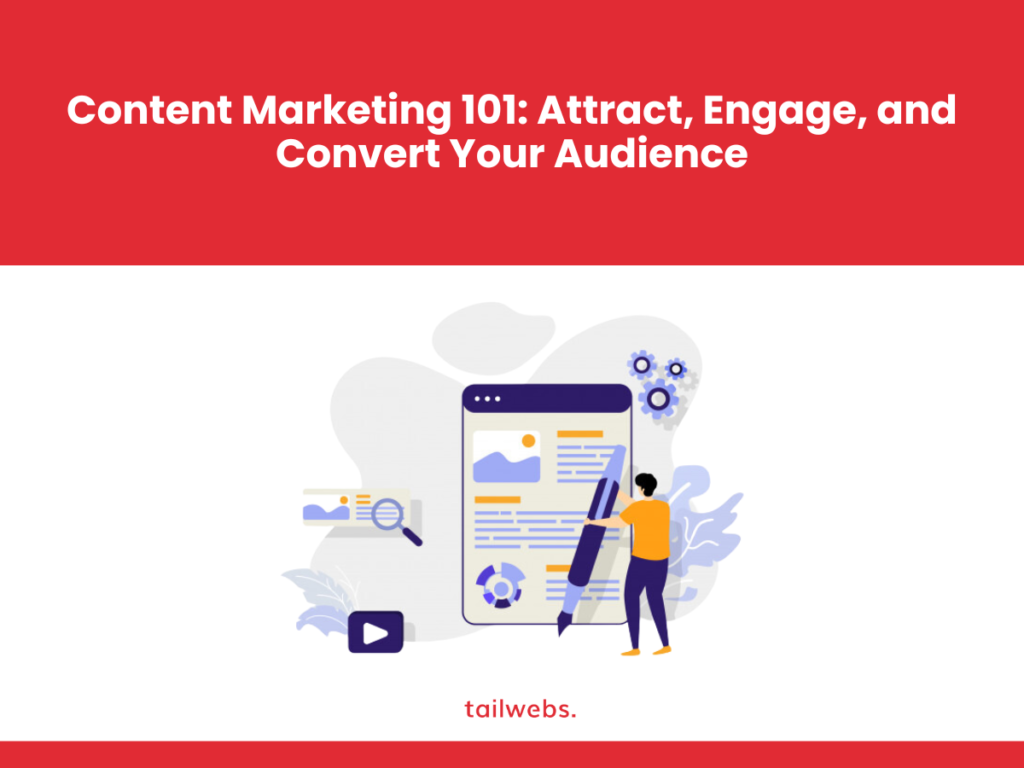One of the biggest challenges faced by many companies, especially mobile apps, is user retention. This is due to several factors, including the need to draw in the right audience, provide the best user experience possible, and take various measures to engage & retain users. Due to these possible problems, the typical retention rate hovers around less than 20% for numerous sectors.
It can be simple to get individuals to install your app, but it can be difficult to retain them. Customers can download millions of apps from the app store & Play Store, and they frequently switch between them. Users keep jumping from app to app to meet their needs. And this becomes a complication in user retention. That’s why our team has gathered a list of 8 quick and effective tips to increase user retention in mobile applications.
Effective Tips To Increase Retention Rates In Mobile Apps
Now that you are aware of the retention rate, let’s look at some of the effective strategies you may use to improve it.
Improve the user onboarding procedure
You can take the following actions to guide new users along while enhancing the user onboarding experience:
Identify the Onboarding Personnel
Different onboarding procedures will be met with diverse responses from the user bases of each mobile app. Make sure the onboarding flow accommodates your users’ needs by determining what they will need. Even better, you may divide your users into different groups to provide each group with a more tailored experience.
Allowing Users To Monitor Their Progress
The onboarding procedure can be made better with gamification by using a bar chart. Allowing customers to track their progress as they move through a tutorial or do particular onboarding tasks will motivate them to continue pushing.
Enhance UX using instructional documents and videos
With easily available tutorial texts and videos, you can assist users as they go through the onboarding process. Incorporate these as a natural part of the flow across the in-app interaction or establish a reference hub that users can access at all times.
To further improve onboarding routines, you may also employ app and web stories. To keep readers going along their trip, stories combine compelling and succinct messaging with imagery and video.
Assure effective mobile app performance
Minimize app crashes, increase the precision of gesture detection, and shorten loading times before you can guarantee good app performance. Assess the app’s overall performance for a while, and if any problems or defects are found, fix them straight away.
Gather and Examine User Data
To implement the most requested changes, you must leverage a combination of first-party, third-party, and zero-party datasets.
You may better define user categories, focus more on target audiences, and order any necessary future enhancements by thoroughly examining all the data you acquire. Also, by using this data, you’ll be able to fully customize each user’s experience, which will help to improve user retention.
Provide a Customized User Experience
What details are relevant while creating user profiles? Location, interests, age, gender, frequency of application use, behaviour, conversion history, and other characteristics can all be taken into account while gathering information. With additional data, an app may be made more specifically for each user.
There are two types of personalization to keep in mind:
-
- Static personalization refers to elements that remain constant throughout time, such as push notifications that include the user’s name.
-
- Dynamic personalization refers to variables like behaviour and conversion history that alter over time.
One such app example is SPOTIFY, which conducts successful customization tactics, where the experts at Spotify know how to properly use personal information. To create customized playlists, they gather historical data. Spotify acquires more loyal users, and music lovers win from the company’s excellent service.
Modifying push notifications
The retention rate can increase by 3–10 times as a result of such push alerts. Additionally, a single push message about onboarding sent to a user during the first week can boost app retention by over 70%.
Users must allow notifications for them to work, but this isn’t necessarily a bad thing as those who have done so are typically more interested in your app and what you have to offer.
Push notifications are to come in at least three different flavours: welcome messages, offers, and customized alerts. Personal touches increase notification open rates by 8%.
For instance, Ola Cabs service provider notifies its user about the safety of its ride.
Conduct App-Store Optimization
Your app store page is essential for giving consumers a realistic impression of your application before they ever use it, therefore it’s critical not to ignore it.
You may attract the appropriate users with ASO. To engage with consumers who will find your app the most beneficial, you must optimize every aspect of your app store website.
Ensure your app’s title and summary contain pertinent keywords and don’t forget to add video demos, correct screenshots, and backlinks. Implicitly, retention will rise if users download your app knowing what to expect based on the app store page.
Use In-App Messaging
Specialized Messages
You can deliver individualized messages of any kind based on the preferences and usage patterns of each user. They could consist of suggestions for particular products or features, discounts, updates that are relevant, and more.
Conducting Surveys
Do surveys to learn more about how people found you, their preferences for your mobile app, and other information. By demonstrating to users that you appreciate their opinions and are actively trying to improve the user experience in light of these opinions, surveys can assist in enhancing user retention.
Also, you can utilize surveys to discover what the public prefers in terms of goods, features, and more. With this information, you can create new features, customize your UX, and more to keep the public interested and involved.
Announcements
Use in-app messages to make announcements if you’ve just updated your app or if you have any sort of upgrade planned. Include information on the adjustments people can anticipate.
Use Email Marketing & A/B Testing To Increase Retention
Email marketing is a tool that mobile marketers use to foster brand recognition, raise engagement, and enhance user retention rates over time. When you share special discounts, offers, and other promotions with your mailing list of valuable subscribers, you can encourage people to return to your app.
Regardless of the size and financial constraints of the business, this approach is successful. 80% of small and medium-sized firms utilize email marketing to keep loyal customers. Furthermore, 49% of customers want to regularly get promotional emails from firms they appreciate.
A/B testing
It is beneficial to perform A/B split testing on any campaign before formally deploying it to determine its efficacy. A/B testing uses two copies of the same piece of information, each with one difference. Then you can offer both to test audiences to see which gets a greater reaction.
For instance, if you start consider launching an in-app message with two distinct visual components or calls to action. You may analyze the outcomes to determine which one users engaged with more after both were run for a while. These results allow you to change or discard the message that performs poorly in favour of the one that performs well.
Conclusion
Thus, it appears that your retention rates in mobile apps may occasionally be more crucial and expensive than user acquisition. A devoted following increases revenue for your company and aids in the application’s development. Fortunately, a variety of tactics exist to increase retention rates. One of the foundations of strong retention rates is making the user feel appreciated. You can do all of the above, develop a killer loyalty programme, spend money on customer service, or improve your app more regularly. It makes sense why consumers would want to keep using your software.
Today, there are several tools at your disposal to assist you in developing effective retention tactics. If you can’t find one to rely on, then we at Tailwebs are available to offer you interactive tutorials that improve the user experience, which can assist increase user retention.
With Tailwebs, it’s simple to develop and publish content that appeals to app users and increases retention. Sign up now to discover more about how Tailwebs can serve you and how you can get started.
FAQS
What Is User Retention?
The number of customers who remain using your product over a predetermined time frame is known as user retention.
User retention is calculated over a predetermined period that you choose. For instance, you can opt to evaluate your user retention rate over a given period or based on a repeating monthly or quarterly basis.
You have the option to analyze particular features or your app’s overall user retention. You can examine the volume of logins over time to measure user retention for your entire product. Pay attention to the volume of users who used a certain function throughout your period for details.
What’s A Retention Rate?
The proportion of existing clients that continue to use your service or product over an extended period is known as your retention rate.
It’s a crucial indicator, especially for subscription-based firms, as it illustrates the size of your organization’s revenue regardless of whether you attract any new customers.
A low retention rate may be a sign that your app needs work. For instance, if a disproportionately large amount of users abandon your app on Day 1, there may be an integration issue.
Why is it crucial to retain users?
Retaining your existing clients boosts word-of-mouth referrals and loyalty. Customers who have purchased a product before are more likely to spend an additional 30% more than new consumers. More profits and lifetime value result from a better client retention rate.





